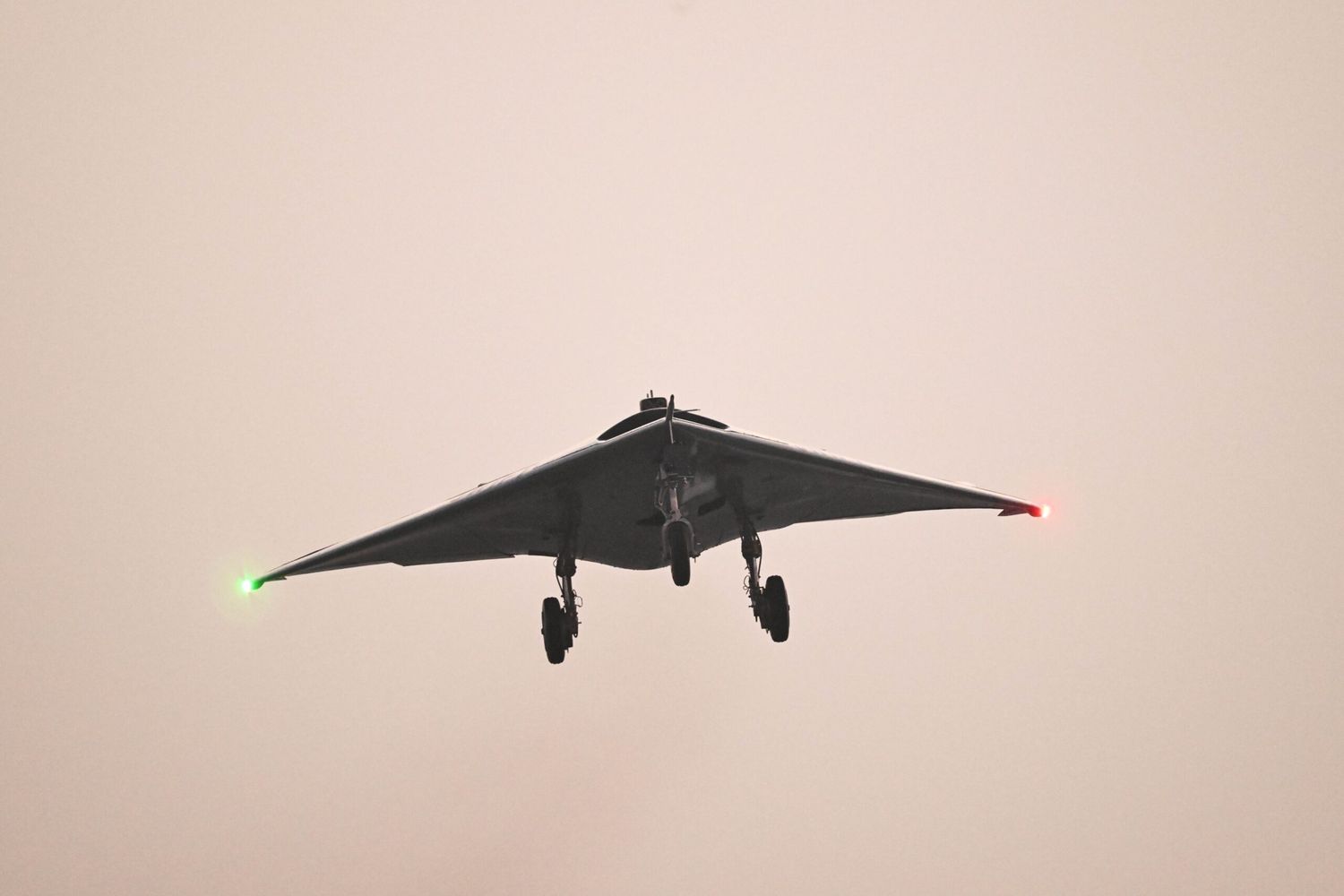India’s Defense Research and Development Organization (DRDO) successfully conducted a flight test of the autonomous flying wing technology demonstrator, a low radar signature, high speed unmanned aerial vehicle (UAV), from the Chitradurga aeronautical test range in Karnataka.
With the successful flight demonstration of this stealthy autonomous UAV, India joins the select club of countries that have mastered the controls of flying wing technology.
#DRDOUpdates | DRDO successfully conducted flight trial of Autonomous Flying Wing Technology Demonstrator with Tailless configuration from Aeronautical Test Range, Chitradurga @DefenceMinIndia @SpokespersonMoD pic.twitter.com/42XQki1seV
— DRDO (@DRDO_India) December 15, 2023
Although this is the first time it has been made public, the maiden flight of this aircraft took place in July 2022, followed by six flight tests in various development configurations using two prototypes manufactured in-house. These flight tests allowed for the development of a robust aerodynamic and control system, real-time integrated simulation, real-time testing on each hardware element, and a state-of-the-art ground control station. The team had optimized the avionics systems, integration and flight operations for a successful seventh flight in final configuration.
The prototype drone is designed and manufactured with lightweight carbon prepreg composite material developed in India. In addition, the composite structure, impregnated with fiber interrogators to control its condition, is a sign of «Aatmanirbharta» (translates as » self-reliant India») in aerospace technology.
The autonomous landing of this high-speed UAV, without the need for ground radar/infrastructure/pilot, was a demonstration of unique capability, allowing take-off and landing from any runway with surveyed coordinates. This was made possible by fusing onboard sensor data with indigenous satellite-based augmentation using GPS Aided GEO Augmented Navigation (GAGAN) receivers to improve the accuracy and integrity of GPS navigation.
This truly autonomous take-off and landing capability provides an appreciation of the degree of technological advancement achieved by the Indian Defense Industry in pillars such as artificial intelligence algorithms, integration of sensor information and navigation systems, outpacing several Eastern and Western competitors, who continue to use remote human control to ensure safe take-off and landing on their drones.


Comentarios
Para comentar, debés estar registrado
Por favor, iniciá sesión